Tumbalalá
- Self-denomination
- Where they are How many
- BA 1381 (Siasi/Sesai, 2020)
- Linguistic family
In December, 2001, the Funai included the Tumbalalá in the roster of indigenous communities recognized and assisted by the Brazilian state. Official recognition occurred after mobilization began in mid-1998 directed towards the adoption of projects of collective articulation that focused on a history, destiny and common origins for the people who today form a community with social frontiers in process and still without a territory demarcated. Inhabiting the back-country of Pambú, an area on the Bahian bank of the lower-to-mid São Francisco occupied in the past by various indigenous missions and the target of extensive cattle raising during the 17th, 18th and 19th centuries, the Tumbalalá are historically connected to an extensive indigenous network of interethnic communication, thus being part and parcel of regional relations of ritual and political trade that sustain their ethnogenesis on the plane of emerging indigenous identities and place them in the ethnographic domain of the Indians of the Brazilian Northeast.
Language
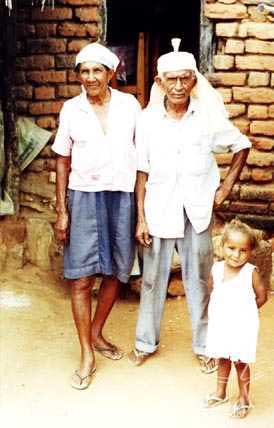
They speak only Portuguese and there is no demonstrated linguistic evidence of the use of fragments of a lexicon that could be referred back to a past indigenous language. Nevertheless, words associated with the ritual objects of the toré - such as "pujá", "kwaqui" and "cataioba" - are represented by several Tumbalalá as survivals of Cariri, a language once spoken over almost the whole extent of the lower-mid São Francisco and which, showing significant dialect variations, was related by several authors to an independent and little known linguistic trunk (Adam, 1897; Pinto, 1935). Although not of Jê origin nor Tupi, the filiation of most Amerindian languages spoken in the Northeast, Cariri was a language used over a wide area of the interior of this region and was divided into four dialects of which two, dzubukuá and kipea, were spoken in the back-country of the São Francisco, while the dialects called Pedra Branca and sapuya were spoken in the area closer to the coast. In dealing with a language that is no longer spoken by the local populations, linguistic study is precarious and almost entirely based on grammars elaborated by missionaries who were in the region during the 17th and 18th centuries.
Location and history of occupation
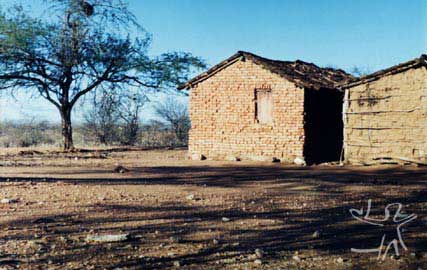
The Tumbalalá occupy an ancient area of indigenous missions and Portuguese colonization in the north of the state of Bahia, between the municipalities of Curaçá and Abaré, on the border with Pernambuco and on the banks of the São Francisco River. There exists as reference points the small and ancient village of Pambú (S 08°33' W 039°21'), the island of Assunção (Truká Indigenous Land) and the city of Cabrobó (PE).
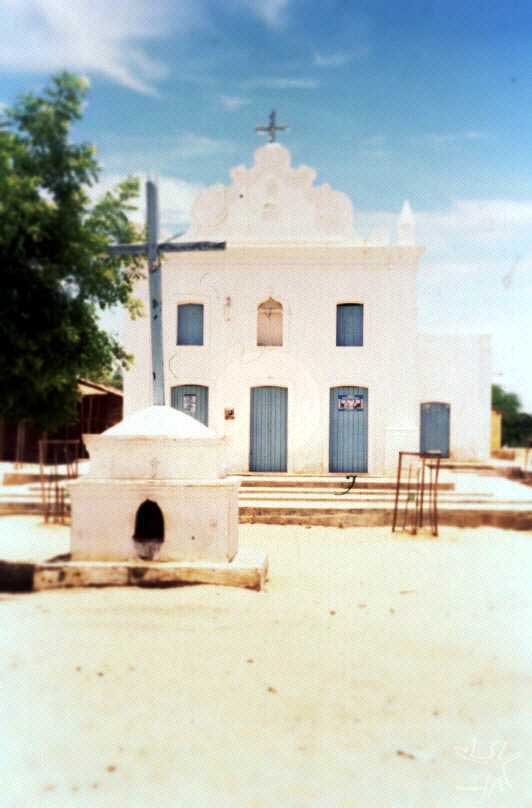
The history of the colonization of the back-country of Pambú goes back to the 17th Century and was increased by extensive bovine cattle-raising and by the formation of indigenous missions on the islands of the lower-mid São Francisco. These two colonial agencies, added to other factors both political and natural, were responsible for flows of resettlements and convergence of people and families that made this part of the interior a regional reference point in the 18th Century. Forming an important nucleus for attraction and settlement of the interior, the back-country of Pambú was occupied until this period by Portuguese settlements, towns and villages of the Cariri Indians, cattle ranches, groups of unreduced, but contacted nomadic Indians, and others with still no communication with the colonizers. Out of this ethnic Babylon which put side by side, in a complex and tense inter-social field, people and institutions with very diverse interests and cultural styles, the Tumbalalá and the other indigenous communities of the lower-mid São Francisco emerged.
Population
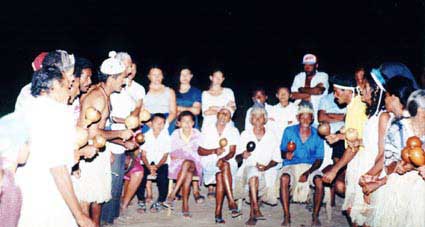
The estimate of the number of families which comprise the Tumbalalá group today is quite imprecise, given that the process of self-identification is in course and the criteria of belonging are being internally formulated. During the process of ethnic identification undertaken in 2001 nearly 180 families were confirmed, but, based on data proposed by the indigenous leadership, the maximum potential limit of the Tumbalalá population is up to around 400 families, but there will only be greater clarity on numbers after the end of the process of landholding regularization of the territory.
Ecological and economic aspects
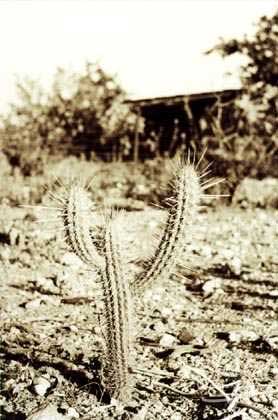
The landscape of the surroundings of Pambú is dominated by sparse hyperxerophylous forest and by the São Francisco River. Given the scarcity of rains over a good part of the year - typical of a semi-arid climate - agricultural activity is frequently developed through irrigation techniques by "sprinkling" and concentrated on the cultivation of manioc, beans, onions, and more rarely, rice. The strip of land closest to the river channel is apparently composed of soils derived from the decomposition of metamorphized sedimented rocks which are quite rich in silicate, but their acidity is counter-balanced by the presence of iron magnesium minerals, notably propitious for several plants of the region. With the exception of several low hills which must be the result of processes of sediment deposits from the river itself on changing its course over its history, near the channel there is a prominent plain which at some points extends far out of sight into the caatinga.
The rainy periods last from December to March and constitute the time in which the innumerable plum trees bear fruits and flowers and natural pastures appear in abundance for the goats and cattle which are raised loose in the caatinga. As a result of this offer of food for domestic animals, there is a small home industry of cheeses and milk which strengthens the budgets of a few families. Besides the plum trees, faveleiras (Jatropha phyllocanthra), xiquexique cactuses and cactuses of various forms which appear throughout the caatinga, several types of jurema - a medium-sized tree which has a central place in the indigenous and Northeastern Afro-indigenous religious tradition - is found both close to the river and on the upper lands, and its morphological variations are what determine the usefulness or not of a particular type for the production of "jurema wine" which is consumed during the toré ritual.
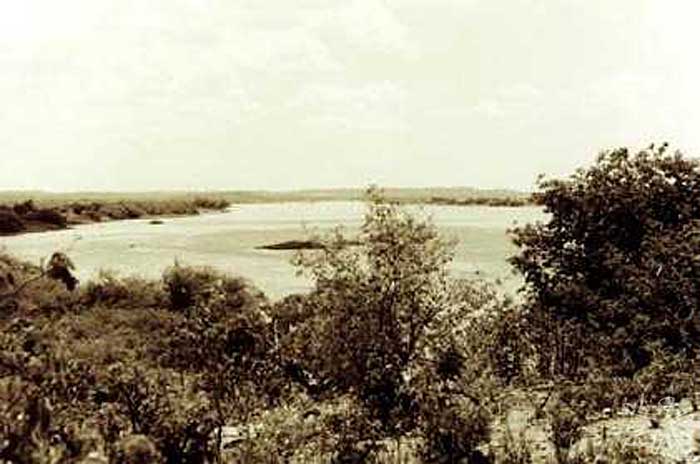
The reduction of areas previously frequented and inhabited by larger-sized forest animals, such as deer and anteater, made hunting an activity rectricted to small game animals that inhabit the caatinga or vegetation that grows along the intermittent course of the streams. They are the tinamou, opossum, cutia, chameleon and, more rarely, armadillo.
Due to various interventions along the course of the São Francisco River which ended up diminishing its fishing potential and navigability, fish do not have a significant part in the local domestic economy, despite the fact that the river still offers a good variety of fish for consumption, besides being the habitat of alligators, capybara and turtles which are consumed in lesser quantities due to their scarcity and difficulty of being caught.
Formation of Tumbalalá community
Ugo Maia - Now tell me something, the enchantments are old Indians, right ?
Sr. Aprígio Fatum - The old ones...There are two parts, you know? There were the old ones when Brazil... that is, when the Portuguese came...
Ugo Maia - When there weren't any whites yet.
Sr. Aprígio Fatum - There were no whites. Only them (the Indians) and the beasts. That is, there were more beasts that walked around, you know? Then they came out of the woods [...] , there were those that put spells. When the Portuguese came, they tamed a lot and many died. That is, if you cut a tree, it means it will sprout again, right ? Just like this work here. Cícero Marinheiro - It was cut, it stopped for some time, but it sprouted again.
Sr. Aprígio Fatum - It sprouted, there was that time when it stopped, you know ? those works, but it sprouted again and today it's on this step, as God determines, right ?
(Dialogue with Tumbalalá men about the recommencement of the ritual works of the toré. September, 1998).
The contemporary process of formation of the Tumbalalá as a community of indigenous identity must be seen in the light of prior regional historical processes. Generally, the emergence of "new" infdigenous identities in the Brazilian Northeast has been discussed by connecting them to territorial and historical demands which are almost always related to some local indigenous settlement. This manner of analyzing the question, although useful, limits the historical support for identities and suggests some automatic relation between indigenous history and ethnogeneses.
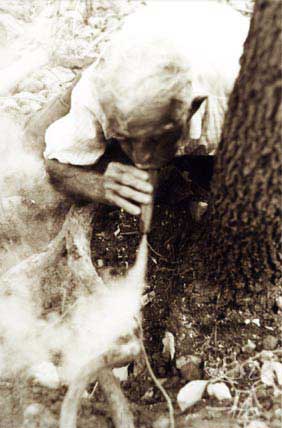
The central point of the ethnogeneses of the new indigenous groups of the Brazilian Northeast are the historical connections that they have with the history of other regional indigenous groups through relations of ritual, political, and marital reciprocity among families of two or more groups. The emergence of the Tumbalalá as a social unit vis-a-vis other collective units was managed on the basis of the prolonged maintenance of the presence of various families which today are part of the group in regional networks of interethnic communication based above all on the exchange of ritual and political knowledge. And interethnic relations have been maintained at least since the second quarter of the past century with the Truká, Atikum and Tuxá Indians who provided the necessary impulse for the formation of a distinct community, at once new and traditional. However, the presence of diverse networks of interethnic communication on the lower-mid São Francisco precedes this epoch and is related to the same historical processes of colonization of the region which involved missionaries, missions, Indians, colonists of various origins, and slaves.
The missionaries had a fundamental role and presence in this part of the interior, setting up several permanent missions along the river; during the 17th and 18th centuries, Jesuits, French and Italian Capuchins, barefoot Carmelites, Oratorians, and Franciscans founded indigenous missions in this interior region, it being quite probable that the Capuchin missionaries had served for longer times in the villages of the Dzubukua Cariri, including on the island of Pambú. In 1749, the islands of this portion of the river gave shelter to the missions of N. Sra. do Ó (Sorobabel Island, with Tapuios, Porcáz and Brancararuz peoples); N. Sra. do Belém (Acará Island, idem); Beato Serafim (Vargem Island, idem); N. Sra. da Conceição (Pambú Island, Tapuios cariris); São Francisco (Aracapá Island, idem); São Félix do Cavalo (Cavalo Island, idem); Santo Antônio (Irapuá Island, idem); N. Sra. da Piedade (Inhamum Island, idem); N. Sra. do Pilar (Coripoz Island, Tapuios Coripós) and N. Sra. dos Remédios (Pontal Island, Tapuios Tamaquiúz).
According to the numerous written sources available in national and foreign archives (National Library, Public Archives of Bahia and Pernambuco, National Archive, Archive of the Capuchin Convents of Penha (PE) and Piedade (BA), Archive of the Propaganda Fide etc.), the interior of the lower-mid São Francisco was one of the most important areas of concentration of indigenous missions of the Brazilian Northeast. However, about the mission of Imaculada Conceição do Pambú - situated on an island in front of the village of Pambú and with which the Tumbalalá usually identify their indigenous heritage - the name for which later came to be the village of Nossa Senhora da Assunção, there are fragments of information insufficient to reconstruct the daily life of the mission. It is certain that this mission survived until at least the decade of the 1880s, but it suffered a massive siege by the regional population, church, and authorities of the neighboring city of Cabrobó (PE). The principal allegation made by its very directors was that the patrimony of the mission had passed to the hands of the church and, thus, there were no more motives to sustain it, at a time when the Indians already lived on the island of Assunção as traditional dwellers and not owners of the lands they occupied.
The petitions for extinction of the village of Assunção were formulated with a double argument; its ancient dwellers, in reduced number, were almost nothing like their ancient ancestors, since they were "mixed into the mass of the population" and, thus, they were already Brazilians and, besides that, they no longer had possession over the land which now was of Our Lady. To these arguments, others were added that contributed to the decree of extinction of the village of the island of Assunção, ordered by the President of the Province of Pernambuco at nearly the end of the 19th Century.
Less dramatic practices of deterritorialization of the indigenous societies of the lower-mid São Francisco were also adopted both by colonial administrators and missionaries who customarily joined distinct groups together in a single area easy to control, in a strategy that sought both to reduce the amount of lands set aside for the Indians as well as promote the social destruction of the groups. For this purpose, ethnological classifications were created that either were founded on language, or on culture, but the principal utility of which was administrative. For example, the label "Cariri" was used for various Indians who inhabited the villages of Pambú, Aracapá and Cavalo and "Rodelas" for the occupants of the various villages of the interior of Paulo Afonso. In this way missionaries and colonial administrators simultaneously created contiguous social and administrative spaces, producing ethnic amalgamations that came to be reproduced ever more as units, but which, in diverse ways, always conserved their internal differences, which in the future permitted their splitting up into new identities that would be sealed by history. And that was what happened with the Tumbalalá and the Truká, present groups of "Cariri" filiation which, together with other groups, probably had their ancestors reduced to the village of the island of Pambú in the 18th Century and, after being put through a homogenizing process of "caboclização" [mixing of whites and Indians], they formed discrete ethnic units marked by the history of the settlement of Imaculada Conceição do Pambú and their own ethnic differences.
The common experiences of deterritorialization shared by various groups created situations in which the need for redefining alliances was imposed on the Indians of the missions of the São Francisco River, taking joint and coordinated actions as strategies of survival in a multisocial field consisting of cattle-rustlers, missionaries, law-makers, land-owners, and their slaves. The strategies promoted the creation of alliances, identities, circuits of communication and trade that would mark the presence of indigenous networks of interethnic communication in the region as historical support for the future processes of ethnogenesis that would be initiated in specific situations.
Tumbalalá ethnogenesis - as well as that of other groups of the region of the lower-mid São Francisco - is thus a continuous and long-term process. In its contemporary phase its principal feature is the creation of the ritual space for toré on the ranch of São Miguel, owned by the Fatum family, after a revelation made to a member of this family, Manuel Ramos, by an enchanted spirit (on enchantments, see the item "ritual and cosmology") of the existence of the Tumbalalá village and its frontiers. This occured in the 1950s, when several local families regularly traded ritual and political experiences with families of the island of Assunção and other places, formerly indigenous missions. The political ingredient that was lacking for the Tumbalalá to follow the example of their neighbors who obtained wardship from the Federal Government, such as the Tuxá, Atikum and Truká, came after the meeting with the ANAI (National Association for Indigenist Action) and the CIMI (Indigenist Missionary Council) in 1998, which set into motion the beginning of an organized movement seeking dialogue with the Funai.
Social and political organization

As happens with most indigenous groups of the Brazilian Northeast, there is little difference of the Tumbalalá in relation to the regional population of non-Indians in regard to their social organization. Basically, the domestic nuclei are autonomous and cooperate economically amongst thermselves according to the system of planting by "parts", according to criteria of affinity, godparentship or kinship, but usually what happens is the overlay of domestic and economic units. Marriages among cousins of some degree are common, but it does not seem to be a preference or implicit norm, although the practice of exchange of members through marriage is more frequent among several families than among others, and it is not difficult to map the maintenance of this practice over four successive generations. These families form the most evident endogamic nuclei that today constitute the basis for the formation of distinct political units among the Tumbalalá, even if belonging to a political nucleus is not critically governed by fixed criteria nor by kinship, individual agency being the most important at the moment of choice.
The recently implanted political organization follows on the steps of the institution of the leader figures of the chief and shaman. The role of the chief, exercised by the cacique, is valid for questions that refer to collective interests, but has no importance in the domestic sphere of the families. He acts more as an external representative and principal internal articulator of collective mobilization, since there formally does not exist the figure of counsellors.
To understand the political configuration of the Tumbalalá through their political groups, it is necessary to understand the role that the ritual activity of toré has for them. As a cult complex directed towards the enchanted spirits and organizer of relations and representations of the indigenous universe of the Northeast, the toré today forms the dense nucleus of alterity of the indigenous groups of this region, being the principal space for development of interethnic relations. And it was exactly through the space of the toré that the Tumbalalá constructed their history as a community of indigenous identity distinct from other neighboring communities with whom they maintain relations, focussing in this ritual both the episode of the revelation of the Tumbalalá village in the 1940s by the enchanted spirits, and the political maturing of the group and their later collective mobilization at the end of the 1990s.
In sum, it is the toré ritual that has been facilitating the participation of the Tumbalalá in regional circuits of ritual and political trade which, in turn, has permitted Tumbalalá ethnogenesis as an historical phenomenon marked by the double interethnic and supernatural comunication, homologous domains, since the enchanted spirits which frequent Tumbalalá ritual activities are also those that come from villages of groups with whom they have historically maintained relations, when they are not ex-leaders of these groups which "went to the enchanted world", became enchanted spirits and continued to play their role of counsellors, but now on the supernatural plane. Such importance is given to the ritual domain that the Tumbalalá political groups are better understood as politico-ritual groups, since they are not characterized either by the formalization of exclusively political authority, nor by the systematic and rigid opposition among them.
Strictly speaking, there are two politico-ritual nuclei which separately develop ritual activities on the toré dance-grounds of São Miguel and Missão Velha, but they cooperate politically between themselves on decisive questions. The fact of being open and not defined makes the labelling of factions difficult for them. They are still disequal in terms of prestige and power, both internally and before agencies and agents of support with whom the Tumbalalá have relations. Their informal political structure, gravitating around figures of their respective leaders, facilitates the passage of people amongst themselves, the loosening of the criteria of belonging and the low level of conflict.
Ritual and cosmology
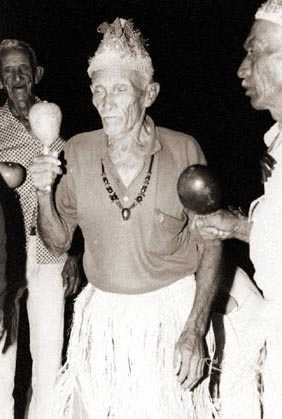
The ritual system of the Tumbalalá is based on the cult to the enchanted spirits and on the use of a type of jurema (Pithecolobium diversifolium; Mimosa artemisiana) from which they make a "wine" which is consumed during the toré. This plant, a medium-to-large-sized bush typical of the interior of the Northeast is central to regional indigenous religious life and presents several varieties that are part of the religious universe of Afro-Brazilian cults, notably catimbó or caboclo [an indigenous spirit] candomblé.
The Tumbalalá enchantments, or enchanted spirits - and even, masters or guides - are supernatural entities which originated from the voluntary process of "enchantment" of several ritually or politically important Indians, on leaving human existence, being distinct from the spirits produced by the inexorability of death. In this case they are ontologically hybrid beings that transit well between men and the supernatural because they have not died - which means they have not completely assumed a non-human nature - and enjoy the attributes inaccessible to a human. They also can be beings which always existed and which maintain communication with humans by means of dreams or when they become present through a toré master who incorporates them. The "enchantment" could even be a transitory state allowed to a few masters sufficiently competent to dominate supernatural forces and acquire polymorphous capacity (that is, to assume various shapes), or simply become invisible.
These transformations occur at some point between onirical and empirical realities and, apparently, they make it possible for the master to transit between the two, though he must be prepared for possible confrontations with dangerous, wild beings or to visit their dwellings in castles, rapids in the river or closed places situated almost always within the limits of the Tumbalalá village. The most adequate image for the enchantments and enchanted spirits is that of a reality that exists in a dimension that crosses with the empirical plane; the enchanted beings and objects are present in these places, but not in bodily form, depending on the power of the master to see them, touch them, and communicate with them. The activation of these capacities results from the observance of certain regular practices, especially the daily offering of tobacco smoke, contact with the enchanted beings and good conduct of the ritual activities.
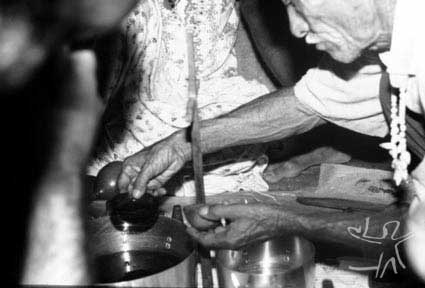
Despite the strong presence of their cult as a diacritical trait of the indigenous Northeast, the representations which are dedicated to these beings vary considerably according to the group or the network of ritual trade and even according to the non-indigenous elements and analogues with which differences are marked, principally spirits of the dead of Spiritist cults or entities that frequent Afro-Brazilian cults. The variations for the enchanted spirits are rooted in the plane of local interpretations for a symbolic repertoire referring to the supernatural that often repeats itself, not only because numerous enchanted spirits are present in various groups (besides the Old Man Ká and Master Viajeiro, Manuel Maior, the Caiporinha, Master Lírio, the Green Forest, etc.), but also due to the broadening of the circuits of ritual trade which become dynamic during national or regional meetings of indigenous leaders promoted by indigenist NGOs (notably the CIMI), which demonstrates the interconnection between the Tumbalalá supernatural universe and the interethnic networks in which they have been participating.
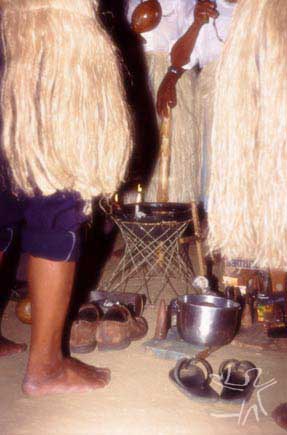
The classification the Tumbalalá have for enchanted spirits is simple; they are of the wilderness or of the waters. The enchanted spirits of the wilderness inhabit the caatinga, sparse forest, they are considered stronger and more powerful because they are undomesticated (or semi-domesticated) creatures. They are commonly portrayed as spirits of ancient Indians of the Tumbalalá village and others (at times not named) and their untamed nature is reinforced by the wildness of their habitat. They are also spirits of cowhands (cowhand João, Manuel Salomão) whose nearness to the caatings makes them indistinguishable in quality from the enchanted spirits of ancestral Indians. One of the fundamental characteristics of the enchanted spirits of the waters on the other hand is the principle of culturalization; they dominate language - while the enchanted spirits of the wild do not speak Portuguese or are mute -, they live in palaces, beautiful places and know well the "science of the Indian", being relatively withdrawn from the emblems connected to the untamed nature that surrounds their wild counterparts.
This double classification exists for the Tumbalalá because their village is considered mixed, pertaining to the waters and to the caatinga forest, which demands of the masters of toré skill in identifying the enchanted spirit and dealing correctly with it, applying the ritual procedures appropriate to its nature. Notwithstanding the differences, they are distrustful and temperamental spirits, demonstrating a wide variety of temperaments, being able to assume benevolent attitudes or not, assist the sick, bring supernatural sicknesses when they feel they are being ignored or make revelations through dreams.
The various borrowings present in Tumbalalá cosmology - above all the sharing of enchanted spirits with other indigenous groups - reveals the dynamic and intensity of their external relations. Regionally, polyssemy present in the symbols shared by the cosmologies allows for the fixing of meaning which better demarcates local specificity, a differentiated identity within the generic unit, approximating interpretive variants, but never merging them altogether. And it is from this residue that Tumbalalá identity emerges as something exclusively theirs.
The toré ritual as cultural catalyzer
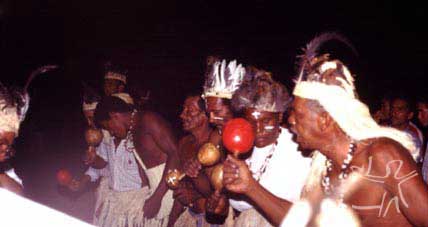
Parallel to the enchanted spirits, the lines (short songs, with simple verses, which serve to honor and attract these beings) constitute the main ritual material from which the toré is made. Like the enchantments, the lines are dynamic and are of interethnic domain - although on being chanted they always go through local adaptations - fluid, open to events and spontaneous compositions. Besides that, their enormous variety permits them to be circumstantially combined depending on the ritual effect desired, allowing us to venture the hypothesis that, roughly speaking, in the context of the magico-religious complex of the Tumbalalá toré, the lines function as rites and the enchantments form the mythical corpus.
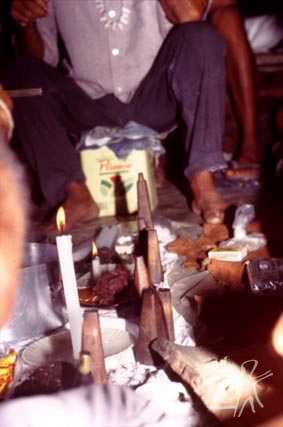
The Tumbalalá develop two form of toré: one, private, restricted to a few people and held in a closed place, and the other, public, which is open, held on the dance-groups appropriate for this purpose. The first is known as a toré session - or "particular", or even simply a "session" - and has the privilege of being a more concentrated and specialized kind of work, capable of establishing a more intense communication with the supernatural. Hence the restricted and selected audience, composed of no more than 12 people, among whom are the masters of greater prestige who command the whole ritual. Strictly speaking, for the indigenous communities of the Northeast a toré session is considered a type of work of the "science of the Indian", that which is capable of bringing important revelations through enchantments, such as the name of the village or the group, in contrast with the toré of the dance-ground, which often is called a "game of the Indian", a kind of "recreation" and which has ludic and social interaction functions quite present.
Different from the public toré, which usually takes place every Saturday, a session is scheduled by someone who wishes to obtain favors from the enchanted spirits, normally the cure of sicknesses for close kin. Besides drinking jurema, the participants are also served the "cure", a flaming composite made of shavings of cedar, garlic and cachaça, prepared differently from the "wine" of the jurema, which consists in immersing the pounded inner bark of the root of the plant in a recipient with cold water. The drink is prepared half-an-hour or forty-five minutes before by one of the principal masters and the time of immersion varies according to the concentrate which one wishes to give to it, the officiant proceeding to continuous sessions of smoke-curing the liquid with a kwaqui, a pipe produced with the root of the jurema plant.
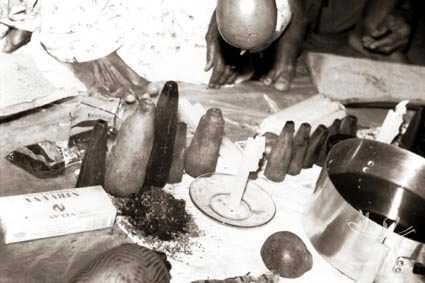
In a toré session, the placing of the ritual objects is done according to a basic symmetrical pattern, with the longitudinal axis as reference. The kwaquis (also called guides, like the enchanted spirits) are arranged in two parallel lines; little piles of tobacco powder are arranged at the vertices for everyone's use, with lit candles near each one and, in the center of the towel, the bowls of the cura and the jurema, between both a small cross. These three elements are those that have the strongest significance in the ritual, for they represent the center of the whole magico-religious universe of the Tumbalalá toré. The jurema is "the force [strength] of the village", according to what the Tumbalalá masters say, and its centrality in the toré is so strong that at times it seems to be symbolically a species of major enchantment or major ancestor. The cura, by its very name, symbolizes the therapeutic capacity of the ritual work, one of its chiefs, and the cross figures as harbinger of the values that guarantee to the toré the attribute of "positive" work, affiliated to the precepts of a popular Catholicism, and truly Indian, in opposition to the Afro-Brazilian cults which also utilize jurema and are seen as "negative" works.
The high point of the session is the presence of the enchanted spirits who come to certain masters and the people present with skill to incorporate them. They do consultations, give counsel and instructions of a private or collective nature, activities which also happen in the public toré. However, it is only in the ritual work of the toré session that lines of the waters are chanted and these kinds of enchanted spirits come, which justifies the fact that this work is seen as more powerful, since it represents a considerable increase in the communication with the supernatural, possibly attaining in the toré session contact with a good part of the enchanted spirits of the Tumbalalá pantheon.
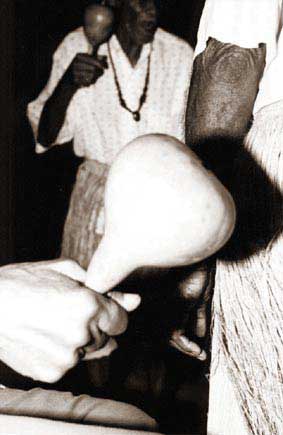
The public toré is held on the dance-grounds of São Miguel, Missão Velha and less frequently on that of Pé da Areia. It is a type of collective entertainment for the majority of the people who participate in it, although its formalism and ritual function are clear, besides providing a space for ritual confraternization with people of other indigenous groups of the region. Its performance basically consists of a rhythmic dance which follows a symmetric distribution on the dance-ground, each of the dancers holding a maracá, wearing a cataioba (skirt of croá fibre) and pujá (headdress made of the same material as the cataioba), besides being organized in stationary lines, one in front of the other, which at given moments go out in parallel fashion and cross through the dance-ground to one of its extremities, where there is a large cross of stone (as in churchyards) in order to then return to their starting-point, at the side of the bench of the officiating masters. During the whole time the pronounced percussion of the maracás marks the rhythm of the steps and the lines, functioning as the principal means for ordering both the choreography and the presence of the enchanted spirits on the dance-grounds, since the stronger and more jubilant the rhythm becomes the greater probability there is that the enchanted spirits will make themselves present. Women, men and children participate in the toré in the same way and there does not seem to be a hierarchical division or use of space, although preferentially the children should stay at the opposite extremes of the heads of the lines so as not to get in the way of their movement.
Articulations in the Indigenous Movement
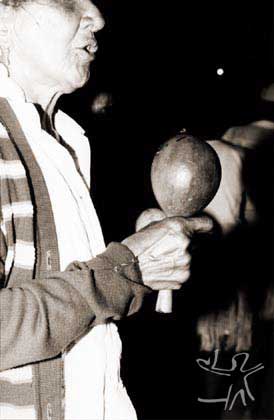
The Tumbalalá, through their principal leaders, today participate in the forums for discussions of the Indian policies administered by the Funai and are in contact with indigenous leaders from various parts of the country. The inclusion of the group in ample spaces of dialogue and access to legal institutions traditionally allies of the indigenous cause - such as the Federal Public Ministry in Salvador or the Sixth Chamber of the Ministry in Brasília - has been facilitated by agencies such as the Indigenist Missionary Council of the Northeast (CIMI/NE) and the National Association for Indigenous Support (ANAI) , which gives direct assistance to the indigenous groups, respectively, in the Brazilian Northeast and in Bahia. Besides these agencies, the APOINME (Articulation of the Indigenous Peoples of the Northeast, Minas Gerais and Espírito Santo) has established a constant presence and action in the region promoting regular assemblies almost always in partnership with the CIMI/NE, in which the Tumbalalá have participated.
Notwithstanding the primacy of action and participation of the Tumbalalá in regional-level indigenous assemblies, the communication and collaboration among various levels of national and international indigenous movements, providing access to supranational instruments for the defense of human rights to articulated Brazilian indigenous groups - such as the Human Rights Commission of the United Nations or Amnesty International - to which indigenous leaders have been resorting to make denunciations against the Brazilian state. Besides the traditional concerns for denunciations raised by indigenous groups, such as the expropriation of indigenous lands by individual interests and the lack of guarantee of indigenous rights by the Brazilian state, environmentalism - a question which is capable of mobilizing public opinion and engaging various sectors of civil society - appears as the language through which indigenous leaders elaborate discourses directed at potential allies of their causes. On this note, it is possible to understand the adhesion of groups who live on the banks and islands of the São Francisco River - among them the Tumbalalá, the Truká, the Tuxá and the Pankararé - to the regional movement against the transposition of the river, a political stance which also corroborates a positive image that the national society has of the Indians as preservers of nature.
More than a year after their recognition by the Funai, their land situation has not been officialized and the work of identification and delimitation of the Tumbalalá Indigenous Land has yet to be initiated. Also, there is still no Funai post nor an employee to meet the demands of the community. Medical assistance and schools utilize the structure that already existed of schools and municipal posts. Even under these precarious conditions, the panorama does not present the same degree of gravity and tension present in various other indigenous groups in the Northeast, due to the fact that the Tumbalalá village being claimed does not have serious problems of invasion, the most complicated of these being a question in discussion with the CHESF (Hydroelectric Company of the São Francisco) bycause of a company camp which the Tumbalalá leaders alledge is partially on indigenous land.
Note on the sources
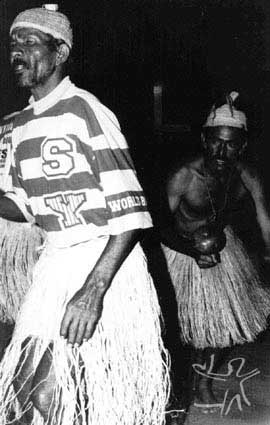
There is not much written specifically on the Tumbalalá, given that their presence in the indigenous ethnology of the Northeast is quite recent. The ethnological studies of this group were initiated at the end of 1998 by the author of this entry and resulted in several articles, research reports, communications in scientific meetings and in his Master's thesis titled "A river of histories: the formation of Tumbalalá alterity and the network of trade on the lower-mid", defended in the Graduate Program in Social Anthropology of the University of São Paulo in January, 2002. The thesis focuses both on the contemporary relations with other indigenous groups of the region, which facilitated the ethnogenesis of the Tumbalalá, as well as regional historical processes which favored the production of indigenous networks of interethnic communication in the lower-middle part of the São Francisco River, using various documents of the 17th, 18th, and 19th centuries from national and foreign archives. Also a CD-ROM - the title of which "Jurema has two 'gaios'[branches ?]" was inspired by research on the toré ritual- was developed on the basis of interviews and filming of ritual activities gathered over three years of research with the group.
Besides these works which were the direct result of ethnological research, there is also the expert's report on ethnic identification produced on request by the Funai by the anthropologist Mércia Batista in 2001 and titled "Anthropological Report of the Self-Denominated Tumbalalá - BA". In this same year, an initiative based on the project "Indians in the View of Indians" by a Bahian NGO with the support of the government of Bahia and UNESCO produced a book entirely comprised of texts and photographs produced by the Tumbalalá themselves, an interesting work of publicizing the history of this indigenous community done by themselves and according to their view of culture, indigenous heritage, past and future. This work can be seen at the site http://www.visaodosindios.com.br.
As far as strictly historical sources, there is a rich set of documents on the mission of the Pambú, the missions of the São Francisco River, the colonial proceedings for the Indians of this part of the interior, the wars between Indians and colonists etc. This material, however, is dispersed in national archives, such as the National Library (notably the Livro da Tesouraria da Província de Pernambuco [Book of the Treasury of the Province of Pernambuco], from the next-to-last quarter of the 18th Century), the Public Archive of Bahia (Cartas Régias from the 17th Century), the National Archive (Livro de Ordenanças e de Patentes), the Public Archive of Pernambuco and the archives of the Capuchin convents of Penha (PE) and Piedade (BA), and European archives, principally the archive of the Propaganda Fide, in Rome. Of the publications on missionary activity on the São Francisco River one of the most important is the report by the Capuchin brother Martin de Nantes titled "Relação sucinta e sincera de uma Missão no rio São Francisco" published for the first time in 1706. It is in reality a condensed report of the activities of the missionary over the long period in which he served in the island missions of the São Francisco, including Pambú, with precious descriptions of the tense relations between the missionaries and cattle-raisers, the missionary doctrine of evangelization and the cultural practices of the Cariri Indians. Notwithstanding the frankly Eurocentric posture of this author in relation to the Indians, it is the only text of its kind published by a Capuchin who worked in the region and is accessible to the public in general, thus constituting an important source both for understanding missionary activities and the composition of the indigenous groups on the lower-mid São Francisco in the 17th and 18th centuries.
On the same line of reports of missionary activities, there is the unpublished text by Brother Bernard de Nantes called "Relato da missão dos índios Kariris do Brasil"[Report of the Mission of the Kariri Indians of Brazil], dated 1702. Brother Bernard succeeded the same Martin de Nantes in the mission of Pambú and his "Report" is quite expressive as a document on the cultural habits of the Cariri Indians, the daily life in the missions, the strategies of evangelization adopted by the Capuchins and the view that they had about their work and the Indians. The information left by Martin and Bernard de Nantes is utilized in the ample and competent work of the friar and church historian Pietro Vittorino Regni (The Capuchins in Bahia) which also utilizes other unpublished reports of activities by missionaries of the villages of Rodelas, Ilha das Vacas, Vargem and Beato Serafim. The later historical works on the Indians and the missions of São Francisco began to be produced in the 1950s based on the ethnographic research of the American anthropologist Hohenthal Jr. This consists of a sequence of articles published in the Revista do Museu Paulista which produced the most careful balance and survey of the indigenous groups of the São Francisco undertaken until then. To do it, Hohenthal Jr. relied both on vast historical research as well as on fieldwork with the caboclos [indigenous peoples or those of indigenous descent] who resided in the area of the old missions and who formed populations practically unassisted by the SPI when they were visited by the anthropologist. Despite the evolutionist paradigm in vogue at that time, Hohenthal Jr. opted to put emphasis on the indigenous elements present in the culture and organization of the groups researched and which, at the same time, were the principal motives for the cultural conflict with the non-Indian regional population who identified them with the regional Afro-Brazilian culture.
Sources of information
- ANDRADE, Ugo Maia. Etnogêse e comunicação ritual no sub-médio São Francisco. In: ALMEIDA, Luís Sávio; GALINDO, Marcos (Orgs.). Índios do Nordeste : temas e problemas 3. Maceió : Edufal, 2002.
. Um grande atractor : tore e articulação (inter)étnica entre os Tumbalala do sertão baiano. Cadernos de Campo, São Paulo : USP, v. 12, n. 10, p. 79-93, 2002.
. A jurema tem "dois gaios". São Paulo : s.ed., 2002. (CD-Rom de circulação restrita)
. Um rio de histórias : a formação da alteridade Tumbalalá e a rede de trocas do sub-médio São Francisco. São Paulo : USP, 2002. (Dissertação de Mestrado).
- BATISTA, Mércia Rejane Rangel. Laudo antropológico do grupo autodenominado Tumbalalá – Bahia. Rio de Janeiro : s.ed., 2001.
- DANTAS, Beatriz G.; SAMPAIO, José Augusto L.; CERVALHO, Maria Rosário G. de. Os povos indígenas no Nordeste Brasileiro : um esboço histórico. In: CUNHA, Manuela Carneiro da (Org.). História dos povos indígenas no Brasil. São Paulo : Companhia das Letras ; Secretaria Municipal de Cultura ; Fapesp, 1992. p.431-56.
- FONSECA, João Justiniano da. Rodelas : curraleiros, índios e missionários. Salvador : EGBA, 1996. 296 p.
- HOHENTHAL JÚNIOR, W. D. The general characteristics of indian cultures in the Rio São Francisco valley. Rev. do Museu Paulista, São Paulo : USP, v.12, n.s., p. 73-92, 1960.
. Little know groups of indians reported in 1696 on São Francisco, in northeastern Brazil. Journal de la Sociéte des Américanistes, Paris : Sociétè des Américanistes, v. 41, p. 31-7, 1952.
. As tribos indígenas do médio e baixo São Francisco. Rev. do Museu Paulista, São Paulo : USP, v.12, n.s., p. 37-71, 1960.
- LOPES, Esmeraldo G. Caminhos de Curaçá. Petrolina : Editora Franciscana, 2000.
. Opara : Formação Histórica e Social do Submédio São Francisco. Juazeiro : Editora Franciscana, 1997.
- NANTES, Bernard de (Frei). Relato da missão dos índios Kariris do Brasil, situados no grande rio São Francisco do lado sul a 7° (graus) da linha do Equinócio. 12 de Setembro de 1702 (2001). Manuscrito inédito. Biblioteca privada do Sr. José Midlin, São Paulo. Traduzido do original em Francês por Gustavo Vergetti a partir da leitura diplomática feita por Pedro Puntoni.
. Relação de uma missão no rio São Francisco : relação sucinta e sincera da missão do padre Martinho de Nantes, pregador capuchinho, missionário apostólico no Brasil entre os índios chamados cariris. São Paulo : Ed. Nacional ; Brasília : INL, 1979[1706]. (Série Brasiliana, 368).
REGNI, Pietro Vittorino. Os Capuchinhos na Bahia. Salvador : s.ed, 1988.